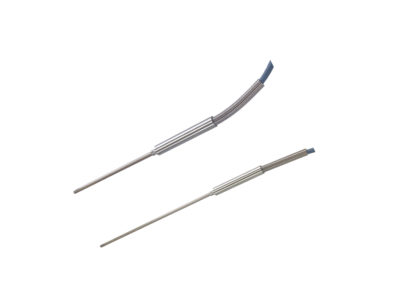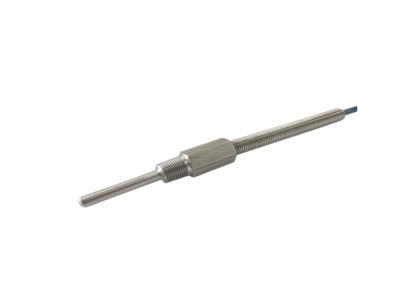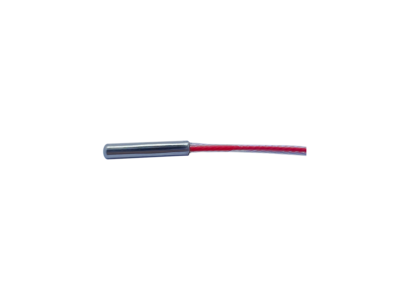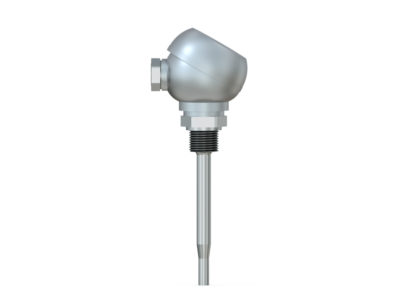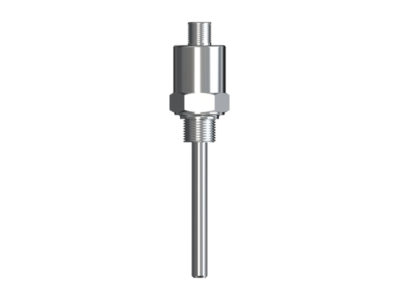We dedicate to provide our customers high-quality temperature sensor as a professional temperature sensor manufacturer. Here are more details about temperature sensor for you:
1. What Is Temperature Sensor?
A temperature sensor is a device that detects and measures coolness and hotness and converts it into an electrical signal. Temperature sensors are used in our everyday life, whether it is a domestic water heater, thermometer, refrigerator or microwave oven. Besides, temperature sensors are used in a wide range of applications, including the field of geotechnical monitoring.
A temperature sensor can also be defined as a simple instrument that measures coolness or hotness and then converts it into readable units. There are temperature sensors for measuring the temperature of boreholes, soil, huge concrete dams or buildings, so basically temperature sensor manufacturers provide various types of temperature sensor.
2. The Working Principles of Temperature Sensor
The working principle of the temperature sensor is the voltage across the diode. If the voltage increases, the temperature will also increase, which is followed by a voltage drop between the base and emitter terminals of the transistor in the diode. Many temperature sensor manufacturers are using this principle. Moreover, there are temperature sensors which work on the principle that changes in temperature cause changes in stress, and used by some of temperature sensor manufacturers.
3. Classes of Temperature Sensors
Temperature sensors are divided into different shapes, sizes, and types. The two main temperature sensors classes are : contact temperature sensors and non-contact temperature sensors, which are two main temperature sensors classes manufacturing by temperature sensor manufacturers.
3.1 Contact Temperature Sensors
The detection part of the contact temperature sensor is in good contact with the measured object, also known as a thermometer.
The temperature sensor achieves heat balance through conduction or convection, so that the indication value of the temperature sensor can directly represent the temperature of the measured object. Generally, the measurement accuracy of this kind temperature sensor manufactured by temperature sensor manufacturers is high. Within a certain temperature range, the temperature sensor can also measure the temperature distribution inside the object. However, large measurement errors will occur for moving bodies, small targets or objects with small heat capacity.
Commonly used temperature sensors include bimetallic thermometers, liquid-in-glass thermometers, pressure thermometers, resistance thermometers, thermistors, and thermocouples. They are widely manufactured by temperature sensor manufacturers and used in industry, agriculture, commerce and other sectors. People also often use these thermometers in daily life. With the wide application of cryogenic technology in national defense engineering, space technology, metallurgy, electronics, food, medicine, petrochemical and other departments and the research of superconducting technology.
Cryogenic thermometers for measuring temperatures below 120K have been developed, such as cryogenic gas thermometers, steam Pressure thermometers, acoustic thermometers, paramagnetic salt thermometers, quantum thermometers, low temperature thermal resistance and low temperature thermocouples, etc. Cryogenic thermometers require small temperature sensing elements, high accuracy, good reproducibility and stability. The carburized glass thermal resistance made of porous high silica glass carburized and sintered is a kind of temperature sensing element of the cryogenic thermometer, which can be used to measure the temperature in the range of 1.6 ~ 300K, and manufactured by some of temperature sensor manufacturers.
3.2 Non-Contact Temperature Sensors
Its sensitive components are not in contact with the measured object, also known as non-contact temperature measuring instrument. This instrument can be used to measure the surface temperature of moving objects, small targets and objects with small heat capacity or rapid temperature changes (transient), and can also be used to measure the temperature distribution of the temperature field. There are many temperature sensor suppliers provide this kind of temperature sensor
The most commonly used non-contact temperature sensors are based on the fundamental law of black body radiation and are called radiant temperature sensors. Radiation thermometry methods include brightness method, radiation method and colorimetric method. All kinds of radiant temperature measurement methods can only measure the corresponding photometric temperature, radiation temperature or colorimetric temperature. Only the temperature measured for a black body (an object that absorbs all radiation and does not reflect light) is the true temperature. If you want to measure the real temperature of the object, you must correct the surface emissivity of the material. However, the surface emissivity of materials depends not only on temperature and wavelength, but also on surface state, coating film and microstructure, so it is difficult to measure accurately.
In automatic production, it is often necessary to use radiation thermometry to measure or control the surface temperature of certain objects, such as the steel strip rolling temperature, roll temperature, forging temperature in metallurgy, and the temperature of various molten metals in smelting furnaces or crucibles . In these specific cases, the measurement of the emissivity of an object’s surface is quite difficult. For automatic measurement and control of solid surface temperature, an additional reflector can be used to form a black body cavity together with the measured surface. The effect of additional radiation can increase the effective radiation and effective emissivity of the measured surface. Use the effective emissivity coefficient to correct the measured temperature through the instrument, and finally get the real temperature of the measured surface.
The most typical additional mirror is a hemispherical mirror. The diffuse radiation on the measured surface near the center of the sphere can be reflected back to the surface by the hemispherical mirror to form additional radiation, thereby increasing the effective emissivity coefficient. In the formula, ε is the surface emissivity of the material, and ρ is the reflectivity of the mirror. As for the radiation measurement of the real temperature of the gas and liquid medium, the method of inserting the heat-resistant material tube to a certain depth to form a black body cavity can be used. The effective emission coefficient of the cylinder cavity after reaching thermal equilibrium with the medium is obtained by calculation. In automatic measurement and control, this value can be used to correct the measured cavity bottom temperature (ie medium temperature) to obtain the real temperature of the medium.
4.Types of Temperature Sensors
The contact and non-contact temperature sensors are divided further into the following mentioned types of temperature sensors which is provided by most of the temperature sensor suppliers.
4.1 The Resistance Temperature Detector (RTD)
This is known as a resistance thermometer and uses the resistance and temperature of the RTD element to measure temperature, you can find it in many temperature sensor suppliers. Different types of materials can be used to make metals. These materials include nickel, platinum and copper. However, the most accurate is platinum so that the cost is high.
4.2 Thermocouple Sensor
This type of sensor consists of two wires and two different metals connected at two points, also provided by many temperature sensor suppliers. The voltage between the two wires reflects the change in temperature. Although accuracy may drop slightly below RTDs, they have the widest temperature range from -200 °C to 1750 °C and are generally more cost-effective.
4.3 Thermistor Sensor
This type of temperature sensor is precise, predictable, large changes in variations under temperature change, and many temperature sensor suppliers are providing it. Such a large change means that the temperature is reflected quickly and accurately. Due to the nature of NTC thermistors being so large and fast, linearization is required – so there is some math involved.
4.4 Other Types of Temperature Sensors
There are several other types of temperature sensors provided by temperature sensor suppliers, such as thermometer temperature sensor, bi-metal thermometer, gas-filled and liquid thermometer, digital thermometer, infrared sensors, thermal imaging, negative temperature coefficient (NTC) thermistor, semiconductor-based sensors, and vibrating wire temperature sensor.
FAQs
1. How to Select a Right Temperature Sensor?
When selecting a temperature sensor for a particular application, several factors must be considered for optimum performance: temperature range, accuracy and stability, size and package. As an experienced temperature sensor supplier, we will help our customers on selection.
2. What is the difference between the temperature sensor and temperature transmitter?
A temperature sensor is an instrument used to measure how hot or cold an object is while a temperature transmitter is a device that interfaces with a temperature sensor to transmit a signal to a remote location for monitoring and control, which means, connect a thermocouple, RTD or thermistor to a data logger to acquire data at any remote location.


